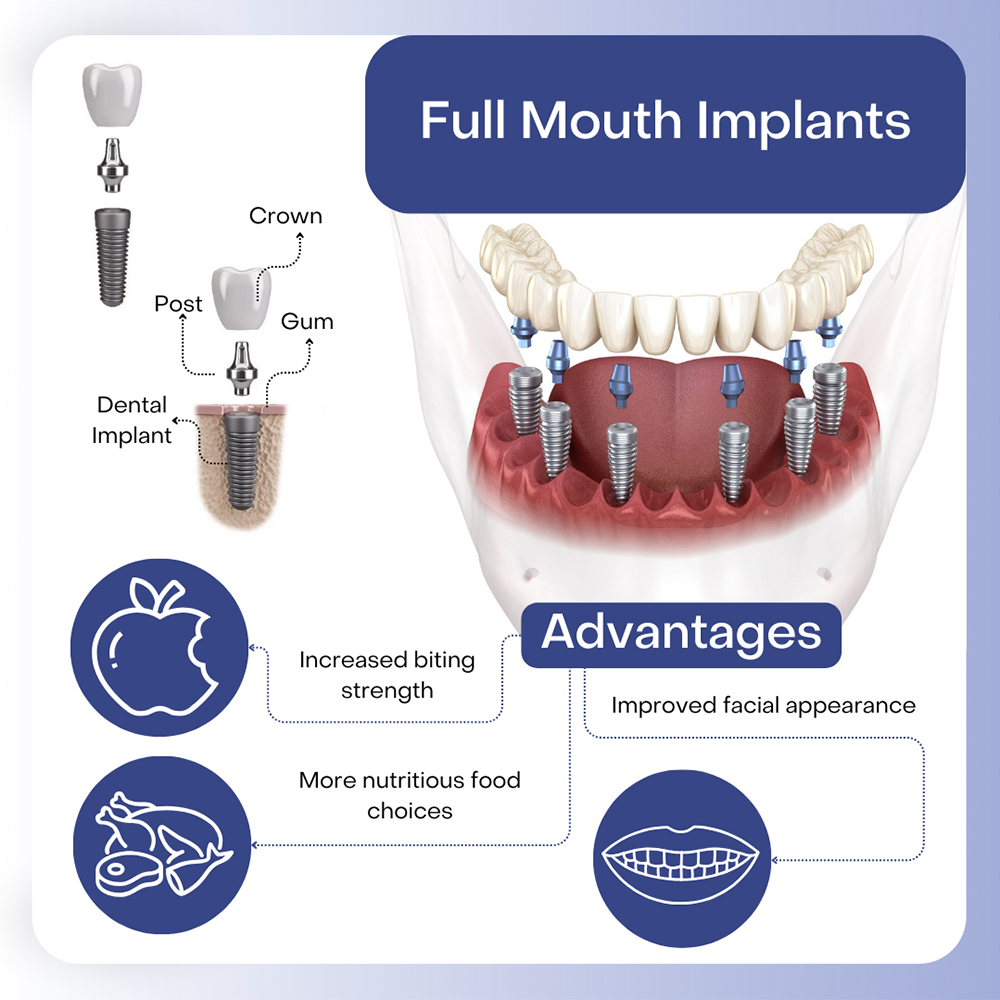A Biased View of Dental Sense
A Biased View of Dental Sense
Blog Article
An Unbiased View of Dental Sense
Table of ContentsThe 3-Minute Rule for Dental SenseThe Best Guide To Dental SenseThe 10-Second Trick For Dental SenseNot known Factual Statements About Dental Sense
are medical gadgets surgically dental implanted right into the jaw to bring back a person's capacity to eat or their appearance. They provide assistance for man-made (phony) teeth, such as crowns, bridges, or dentures. When a tooth is shed due to injury or illness, a person can experience difficulties such as quick bone loss, malfunctioning speech, or modifications to chewing patterns that cause discomfort.Oral implant systems contain a dental implant body and oral implant joint and may likewise include a joint fixation screw. Same day dental implants. The oral implant body is operatively put in the jawbone in location of the tooth's origin. The dental implant joint is normally attached to the implant body by the abutment addiction screw and extends via periodontals right into the mouth to support the affixed synthetic teeth
(https://dentalsense1.carrd.co/)Framework of The Oral Implant System selecting oral implants, talk with your oral company regarding the possible benefits and threats, and whether you are a candidate for the procedure. Points to consider: Your overall health is an essential consider establishing whether you are a good candidate for oral implants, the length of time it will require to recover, and the length of time the dental implant might stay in place.
Cigarette smoking may affect the recovery process and reduce the long-lasting success of the dental implant. The recovery process for the dental implant body might take numerous months or longer, during which time you usually have a short-term abutment instead of the tooth. the oral implant procedure: Thoroughly follow the dental hygiene instructions offered to you by your dental copyright.
The Main Principles Of Dental Sense
Implant failure can result in the demand for one more procedure to repair or change the dental implant system. Brings back the ability to chew Recovers cosmetic look Aids keep the jawbone from diminishing as a result of bone loss Preserves the wellness of the bordering bone and gum tissues Helps maintain nearby (neighboring) teeth steady Improves quality of life Damage to bordering all-natural teeth during dental implant positioning Injury to the surrounding cells throughout surgical treatment, such as sinus opening Injury throughout surgical treatment (as an example, fracture of surrounding jawbone) Insufficient function, such as feeling like the teeth do not bite with each other usually An experience that the tooth is loose or turning in position resulting from a joint screw loosening Implant body failing (looseness of the dental implant body) as a result of systemic infection, which may be more probable in people with uncontrolled diabetes due to regional infection in bone and gum tissues sustaining the implant body due to delayed recovery, which might be more most likely in patients who smoke Trouble cleaning the gum tissues around the dental implant, leading to bad dental hygiene Unattended gum disease Post-surgical numbness due to nerve impingement or damage Constantly notify health and wellness care providers and imaging professionals that you have oral implants before any type of magnetic resonance imaging (MRI) or x-ray treatments.
FDA is not knowledgeable about any kind of adverse occasions reported for MRI or x-ray procedures with dental implants. Dental implants systems are usually constructed from products that adhere to global agreement standards of the International Organization for Standardization (ISO) or ASTM International. These criteria have details of what makes a safe product.

An oral implant is a structure that replaces a missing tooth. With screw-like devices, the specialist inserts an implant into the jawbone, and it acts as a support for a synthetic tooth, called a crown.
Getting The Dental Sense To Work
Some people are not eligible for dental implant surgical treatment. It is for oral surgeons to operate people with: intense illnessuncontrollable metabolic diseasebone or soft cells condition or infectionIf these problems are settled, an individual can have the surgery. In, dental cosmetic surgeons refrain from operating individuals with: If individuals with any of the above go through dental implant surgical procedure, there is a greater threat of the implant falling short.

Dental dental implant surgical procedure is an individualized procedure. It's company website not the exact same for everyone. The following provides a general introduction of what you can anticipate your dentist, dental specialist, periodontist or prosthodontist to do: Place the implant operatively. Provide you time to heal. Attach the message and last crown, bridge or denture.
Next off, your surgeon will meticulously position the oral implant into your jaw. If your dental implant is near the front of your mouth, your dentist will make a temporary tooth for you to use until you recover.
Dental Sense Fundamentals Explained
Your supplier can tell you what to expect in your scenario. During the healing phase, your jawbone should fuse to the dental implant. This process, called osseointegration, is vital for stability and lasting success. This procedure can take anywhere from 3 to 9 months. Sometimes, it might take much longer.
When your dental implant heals, your dentist can attach the joint (little adapter post) and your last reconstruction (crown, bridge or denture). This generally takes concerning one hour to complete and may require a 2nd small surgery. You shouldn't feel any pain during your dental implant procedure since your company will use drug to numb your periodontals.
Report this page